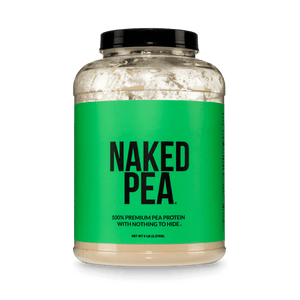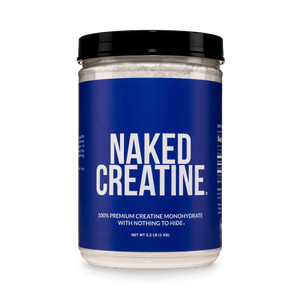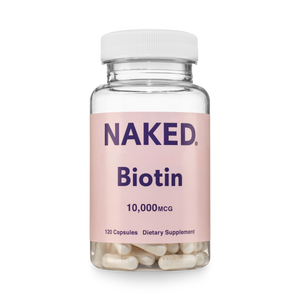Understanding how much protein your body needs is essential for maintaining optimal health and supporting key bodily functions. While protein requirements vary based on factors like age, weight, and activity level, calculating your personal intake doesn't have to be complicated.
Whether you're looking to build muscle, manage your weight, or simply ensure you're meeting nutritional guidelines, knowing how to calculate protein intake is a valuable skill.
The recommended protein intake for healthy adults typically starts at 0.8 grams per kilogram of body weight, with adjustments needed for special circumstances like pregnancy, athletic training, or recovery.
You'll find that protein can represent anywhere from 10% to 35% of your total daily calories, depending on your specific goals and lifestyle needs (Fulgoni, 2008; Berryman et al., 2018).
Check out our protein calculator!
Why Protein Intake Matters for Your Health

Muscle Mass and Strength
Optimal protein intake directly impacts your muscle health and physical performance. As you age, maintaining adequate protein consumption becomes critical for preserving muscle mass and preventing sarcopenia (age-related muscle loss).
Research shows that higher protein intake is associated with better muscle synthesis, strength, and overall physical function (Carbone & Pasiakos, 2019; Tagawa et al., 2020). For active individuals, protein supports muscle recovery after exercise and enhances training adaptations that improve performance (Wirth et al., 2020; Wu, 2016).
Bone Health Benefits
Protein plays a crucial role in maintaining strong, healthy bones throughout your life.
Consuming sufficient protein contributes to greater bone density and reduced fracture risk, particularly important as you age (Shams-White et al., 2017; Rizzoli et al., 2018). The amino acids in protein help form the structural matrix of your bones and support calcium absorption.
For older adults, combining adequate protein intake with calcium and vitamin D creates an optimal environment for bone preservation and maintenance (Groenendijk et al., 2019).
A study on the effects of protein on bone mineral density and fracture incidence in older adults demonstrated those with higher protein intake (over 15% of their total energy intake), had higher bone mineral density at the hip, whole body, and lumbar spine and a lower risk of vertebral fracture.
Weight Management Support

Protein's impact on your weight management stems from its superior satiating effect compared to other macronutrients.
High-protein foods help you feel fuller longer, naturally reducing your overall calorie consumption throughout the day (Paddon-Jones et al., 2008). The thermic effect of protein—requiring more energy to digest than carbohydrates or fats—increases your metabolic rate during digestion.
When combined with regular physical activity, sufficient protein intake helps preserve lean muscle mass during weight loss, ensuring you primarily lose fat rather than muscle.
A randomized controlled trial comparing high-protein vs standard-protein diets for weight loss in Mexican adults found that those who were adherent to the high-protein diet lost significantly more weight than those who were adherent to the standard-protein diet.
Key Factors Influencing Protein Consumption

Your protein needs fluctuate based on several important factors:
-
Age: Requirements increase as you get older to combat natural muscle loss (Campbell et al., 2023; Bauer et al., 2013)
-
Activity level: Higher needs for athletes and those with regular intense exercise (Phillips, 2012)
-
Health status: Certain medical conditions may increase or decrease optimal intake (Phillips et al., 2020)
-
Current diet: Your existing dietary patterns influence how much additional protein you need (Pedersen et al., 2013)
-
Body composition goals: Building muscle requires more protein than maintenance (Wu, 2016)
Your optimal protein intake depends on these individual factors rather than following a one-size-fits-all approach. While the general benefits of adequate protein are clear for muscle and bone health, research continues on its effects on metabolic health, sleep quality, and overall quality of life (Wirth et al., 2024).
Understanding Daily Protein Requirements

Daily protein requirements vary based on individual factors and health goals. Understanding these requirements helps you optimize your nutrition plan for better health outcomes.
Recommended Dietary Allowance (RDA)
The Recommended Dietary Allowance (RDA) for protein is 0.8 grams per kilogram of body weight (0.36 grams per pound).
This represents the minimum amount needed to prevent protein deficiency in most healthy adults, not the optimal amount for all individuals (Wolfe et al., 2017; Phillips, 2012).
To calculate your baseline protein needs, multiply your weight in kilograms by 0.8 or your weight in pounds by 0.36. For example, a 140-pound person needs approximately 53 grams of protein daily based on the RDA.
Research shows that the average requirement for healthy adults is 0.66 grams per kilogram, with the higher 0.83 g/kg recommendation designed to cover nearly all individuals' needs (Products, 2012; Richter et al., 2019).
Factors That Affect Your Protein Needs
Multiple factors influence your daily protein requirements beyond the baseline RDA:
-
Age: Protein needs increase during growth periods for children and adolescents. Older adults often require higher protein intake (up to 1.2-1.5 g/kg) to counteract age-related muscle loss (Nowson & O'Connell, 2015; Bauer et al., 2013).
-
Activity Level: Athletes and highly active individuals need more protein to support muscle recovery and development. Requirements increase with physical activity intensity, particularly when combined with resistance training (Phillips, 2012; Wu, 2016).
-
Health Status: Certain medical conditions, recovery from surgery, or illness may increase protein needs to support healing and tissue repair (Hoffer & Bistrian, 2012).
-
Body Composition Goals: Building muscle typically requires higher protein intake than maintaining current muscle mass. Weight loss programs may benefit from increased protein to preserve lean muscle tissue (Wu, 2016).
-
Demographic Variations: Factors such as gender and ethnicity influence protein needs and should be considered when calculating your personal requirements (O'Bree et al., 2024; Deng et al., 2023).
Regular assessment of your protein intake against these factors helps ensure you're meeting your body's specific needs rather than simply adhering to generalized recommendations.
How to Calculate Your Basic Protein Needs

Calculating your basic protein needs involves a simple weight-based formula that's adjusted according to your activity level.
This personalized approach ensures you're consuming adequate protein for your specific circumstances rather than following generic recommendations.
The Weight-Based Formula Method
The weight-based formula provides a straightforward way to determine your daily protein requirements. First, convert your body weight to kilograms by dividing your weight in pounds by 2.2. For example, if you weigh 150 pounds, your weight in kilograms is 68.18 kg (150 ÷ 2.2).
Once you've converted your weight, you can apply the appropriate protein factor based on your health status and goals.
The average requirement for healthy adults is approximately 0.66 grams of protein per kilogram of body weight daily, while the recommended intake to cover nearly all individuals' needs is 0.83 g/kg (Products, 2012; Richter et al., 2019).
Activity Level Adjustments
Your activity level significantly impacts your protein requirements, necessitating adjustments to the basic calculation. For sedentary adults, the Recommended Dietary Allowance (RDA) is 0.8 grams of protein per kilogram of body weight daily—this represents the minimum to prevent malnutrition (Wolfe et al., 2017).
However, research suggests this minimum may not support optimal health for most people. A more practical range for sedentary adults is around 1.2 grams per kilogram daily, which provides additional protein for maintaining muscle mass and supporting overall bodily functions.
For those with minimal, moderate, and intense physical activity, protein intakes of 1.0, 1.3, and 1.6 g/kg/day, respectively, are suggested to support muscle accretion and strength (Wu, 2016). Children and adolescents require higher protein intakes during growth periods, with specific requirements varying by age.
Calculating Protein for Specific Goals

Protein needs vary significantly based on your specific health and fitness objectives. The amount of protein required changes depending on whether you're trying to lose weight, build muscle, or simply maintain your current body composition.
Protein for Weight Loss
When losing weight, higher protein intake helps preserve lean muscle mass during calorie restriction. For effective fat loss, aim for 1.6 to 2.2 grams of protein per kilogram of body weight daily or up to 2.4g if you are an athlete.
This increased protein consumption supports metabolism through its thermogenic effect, enhancing energy expenditure during digestion (Paddon-Jones et al., 2008). A 70-kilogram individual should consume between 112 and 168 grams of protein daily while in a caloric deficit to maintain muscle tissue and support satiety.
Protein for Muscle Building
Building muscle requires adequate protein to support tissue repair and growth. Athletes and individuals focused on muscle development benefit from protein intakes ranging from 1.6 to 2.2 grams per kilogram of body weight (Phillips, 2012; Tagawa et al., 2020). This higher intake provides the amino acids necessary for muscle protein synthesis, particularly when combined with resistance training.
A dose-response relationship exists, where increased protein intake (up to 50 g/day) significantly enhances lean body mass across various populations (Tagawa et al., 2020).
Optimal muscle building occurs when protein consumption is distributed throughout the day across multiple meals, maximizing the body's ability to utilize the nutrients for tissue growth.
According to a review published by the Journal of the International Society of Sports Nutrition, to maximize anabolism, it’s recommended to consume protein at a target rate of 0.4-0.55 grams per kilogram of body weight per meal across a minimum of 4 meals to reach the protein recommendations of 1.6-2.2 grams per kilogram per day.
Protein for Maintenance
Maintaining your current body composition requires at least 1.2 grams of protein per kilogram of body weight daily.
This baseline recommendation supports ongoing tissue repair and prevents muscle loss in generally healthy individuals (Traylor et al., 2018). For example, someone weighing 70 kilograms needs approximately 84 grams of protein daily for maintenance.
Protein intake can also be calculated as a percentage of total calories, typically comprising 10% to 35% of your daily energy intake (Fulgoni, 2008; Berryman et al., 2018). Consistent protein consumption throughout the day helps preserve lean mass and supports overall metabolic health.
Best Sources of Quality Protein

Quality protein sources provide essential amino acids that support your body's functions and help meet your calculated protein needs. The type of protein you consume impacts its digestibility and nutritional benefits.
Animal-Based Protein Options
Animal proteins offer complete amino acid profiles with high bioavailability. These proteins contain all nine essential amino acids in proportions that your body can readily use.
Meat, poultry, fish, eggs, and dairy products provide between 20-30 grams of protein per 3-4 ounce serving. For example, a 3-ounce chicken breast contains 27 grams of protein, while a large egg provides 6 grams.
Animal proteins support muscle health effectively, though research indicates balancing these with plant sources may benefit long-term health outcomes (Campbell et al., 2023; Berner et al., 2013).
Plant-Based Protein Options
Plant proteins vary in amino acid composition but can meet protein requirements when consumed in variety. Legumes, nuts, seeds, and whole grains contain between 7-20 grams of protein per serving.
For instance, a cup of cooked lentils delivers about 18 grams of protein, while a quarter cup of almonds provides 7 grams. Research by Campbell et al. (2023) shows that vegetable proteins correlate with lower cardiovascular mortality rates compared to animal proteins.
Combining different plant proteins throughout the day ensures you receive all essential amino acids your body needs (Moughan, 2021).
A small study conducted in 2021 comparing high-protein plant-based diet with a protein-matched omnivorous diet demonstrated that a high-protein diet of at least 1.6 grams per kilogram of body weight per day, whether exclusively plant-based or a mixed diet, did not differ in supporting muscle strength and mass accrual.
Tracking Your Protein Intake Effectively

Tracking protein intake helps ensure you're meeting your nutritional targets consistently. Monitoring your daily protein consumption provides valuable data to adjust your diet according to your specific health and fitness goals.
Food Tracking Apps and Tools
Food tracking apps simplify protein monitoring by offering comprehensive nutritional databases and user-friendly interfaces. Apps like MyFitnessPal, Cronometer, and Lose It! contain thousands of food items with detailed protein content information.
These digital tools calculate your daily protein totals automatically when you log meals and snacks, eliminating manual calculations. Many apps also feature barcode scanners to quickly add packaged foods and provide visual representations of your protein consumption trends over time.
“As a Registered Dietitian Nutritionist, whether you are starting a fitness or weight loss journey, I always recommend short-term tracking to help you be more aware, adjust, and become comfortable with what higher protein intakes look like and how to build your meals accordingly.”
Nutrition labels serve as essential protein tracking tools. The "Protein" section on food packaging indicates the amount in grams per serving, making it easier to track your intake throughout the day.
Kitchen scales measure food portions accurately, converting weight measurements into precise protein amounts. For regular protein tracking, consider a nutrition journal where you record meal components and protein content to identify patterns in your diet.
Meal Planning Strategies
Meal planning enhances protein tracking by establishing a structured approach to your nutritional needs. Pre-planning weekly meals with specific protein targets simplifies tracking and reduces decision fatigue.
Batch cooking protein-rich foods like grilled chicken (25g protein per 3oz), hard-boiled eggs (6g protein each), or lentils (18g protein per cup) creates ready-to-eat options with known protein content.
Protein-focused meal prep involves dividing your daily protein requirement across meals—typically 20-30g per meal for optimal absorption.
This distribution approach, known as protein pacing, maintains steady amino acid availability throughout the day. Creating a rotation of go-to meals with calculated protein amounts eliminates the need for continuous tracking of familiar foods.
For instance, a breakfast of two eggs and Greek yogurt provides approximately 25g of protein, while a lunch of 4oz chicken breast with quinoa delivers roughly 35g of protein, making daily tracking more manageable.
Signs You Need to Adjust Your Protein Intake

Physical Signs of Inadequate Protein
Physical indicators reveal when your protein intake isn't meeting your body's needs. Muscle weakness and fatigue emerge as common symptoms, as your body lacks sufficient amino acids for proper muscle maintenance (Phillips et al., 2020).
Hair loss and brittle nails occur because protein is essential for keratin production—the structural component of both tissues.
Slow wound healing signals protein deficiency since your body requires amino acids to repair damaged tissues effectively.
Many people experiencing these symptoms notice improvement when increasing their protein consumption to recommended levels based on their body weight and activity level.
Signs of Excessive Protein Consumption
Consuming protein beyond your body's requirements creates noticeable effects. Digestive discomfort, including constipation or diarrhea, frequently results from high-protein diets that lack adequate fiber.
Persistent bad breath often develops due to ketone production when protein intake is excessive relative to carbohydrates. Dehydration occurs more easily as your kidneys work harder to eliminate nitrogen waste products from protein metabolism.
If you experience these symptoms, consider recalculating your needs using the 0.8 grams per kilogram formula for sedentary adults or 1.2-1.7 grams per kilogram for moderately active individuals (Wu, 2016). Long-term consumption of protein up to 2 g/kg/day is generally safe for healthy adults, with a tolerable upper limit of 3.5 g/kg/day for well-adapted individuals, but chronic high protein intake (>2 g/kg/day) may lead to digestive, renal, and vascular issues and should be approached with caution (Wu, 2016).
Performance and Recovery Indicators

Your exercise performance provides reliable feedback about protein adequacy. Decreased strength or endurance during workouts often indicates insufficient protein for muscle repair and energy production.
Prolonged muscle soreness after exercise suggests your body lacks the necessary amino acids for efficient recovery.
Poor training adaptations despite consistent exercise point to inadequate protein supporting your fitness goals. Active individuals typically require higher protein intake—between 1.2 to 1.7 grams per kilogram of body weight daily—to support their performance and recovery needs (Phillips, 2012; Wu, 2016).
Mental and Emotional Signals
Protein intake affects cognitive function and mood regulation in measurable ways. Persistent brain fog or difficulty concentrating may stem from insufficient amino acids for neurotransmitter production.
Unusual food cravings, particularly for protein-rich foods, represent your body's attempt to obtain needed nutrients. Irritability and mood fluctuations sometimes result from blood sugar instability due to imbalanced macronutrient intake, including inadequate protein.
These mental and emotional signals often improve when protein intake aligns with your specific needs, calculated based on factors like age, weight, and activity level.
Conclusion
Calculating your protein intake isn't just about following a formula—it's about tailoring nutrition to your unique body and goals. By determining the right amount based on your weight, activity level, and health objectives, you're setting yourself up for optimal physical performance and overall wellness.
Remember that protein needs evolve as your lifestyle changes. Whether you're building muscle, losing weight, or simply maintaining health, tracking your intake using the tools and strategies discussed helps ensure you're getting what your body truly needs.
Listen to your body's signals and adjust accordingly. With the right protein intake, you'll likely experience improved energy, better recovery, and greater satisfaction from your meals—benefits that extend far beyond the numbers on a nutrition label.
Frequently Asked Questions

How much protein does an average adult need daily?
The average healthy adult needs at least 0.8 grams of protein per kilogram of body weight daily, which is the Recommended Dietary Allowance (RDA) (Wolfe et al., 2017; Phillips, 2012).
This translates to about 54 grams for a 150-pound person. However, for optimal health, especially for active individuals or older adults, consuming 1.2-1.6 grams per kilogram may be more beneficial to maintain muscle mass and support bodily functions (Traylor et al., 2018; Nowson & O'Connell, 2015).
Do athletes need more protein than sedentary individuals?
Yes, athletes require significantly more protein than sedentary individuals. While the basic recommendation for sedentary adults is 0.8 grams per kilogram, athletes should aim for 1.6-2.2 grams per kilogram daily, depending on their training intensity and goals (Phillips, 2012; Wu, 2016).
This higher intake supports muscle repair, recovery, and growth following exercise. Endurance athletes need protein for muscle recovery, while strength athletes need it for muscle building.
What are signs of inadequate protein intake?
Signs of inadequate protein intake include muscle weakness, unusual fatigue, hair loss, brittle nails, and slow wound healing.
You might also experience decreased workout performance, prolonged muscle soreness, brain fog, increased food cravings (especially for protein-rich foods), and mood fluctuations (Phillips et al., 2020).
If you notice these symptoms persisting, consider evaluating your protein intake and consulting with a healthcare provider.
Can I get enough protein from plant sources alone?
Yes, you can meet your protein needs with plant sources alone, though it requires more planning.
Plant proteins vary in their amino acid profiles, so consuming a variety of sources throughout the day is essential.
Good plant protein sources include legumes, nuts, seeds, whole grains, and soy products (Campbell et al., 2023). Combining different plant proteins ensures you get all essential amino acids.
Some research suggests plant proteins may offer cardiovascular benefits over animal proteins (Pedersen et al., 2013).
How much protein should I eat for weight loss?
For weight loss, a higher protein intake of 1.6-2.4 grams per kilogram of body weight is recommended.
This increased protein helps preserve lean muscle mass during calorie restriction, maintains satiety to reduce overall food intake, and has a higher thermic effect, meaning your body burns more calories digesting protein compared to fats or carbohydrates (Paddon-Jones et al., 2008). Consistent protein intake throughout the day supports this process.
Does protein intake need to change as we age?
Yes, protein requirements typically increase with age. Older adults (65+) need more protein to combat age-related muscle loss (sarcopenia), with recommendations ranging from 1.0-1.5 grams per kilogram daily (Bauer et al., 2013; Nowson & O'Connell, 2015).
Higher protein intake in seniors is associated with better bone density, reduced fracture risk, and maintenance of independence and functionality (Rizzoli et al., 2018; Groenendijk et al., 2019). Regular protein consumption throughout the day is particularly important for older adults.
What are the best tools for tracking protein intake?
The most effective tools for tracking protein intake include food tracking apps like MyFitnessPal and Cronometer, which offer extensive nutritional databases and automatic calculations.
Nutrition labels provide accurate protein content information for packaged foods. Kitchen scales help measure portions precisely.
Meal planning and batch cooking can also enhance tracking by pre-determining protein content in meals, making it easier to meet daily requirements.
Can consuming too much protein be harmful?
Yes, excessive protein intake can potentially cause issues like digestive discomfort, persistent bad breath, dehydration, and strain on kidney function, particularly in those with existing kidney problems.
For most healthy adults, protein intake up to 2-2.5 grams per kilogram of body weight is generally considered safe (Wu, 2016). If you experience negative symptoms after increasing protein consumption, consider adjusting your intake or consulting a healthcare provider.
Disclaimer:
This article is for informational purposes only and does not constitute medical or dietary advice. Always consult with a registered dietitian, physician, or qualified healthcare provider before making changes to your diet or protein intake—especially if you have a medical condition, are pregnant, or are taking medications. Individual protein needs can vary significantly, and this article does not replace personalized guidance.
References
Bauer, J., Biolo, G., Cederholm, T., Cesari, M., Cruz-Jentoft, A., Morley, J., Phillips, S., Sieber, C., Stehle, P., Teta, D., Visvanathan, R., Volpi, E., & Boirie, Y. (2013). Evidence-based recommendations for optimal dietary protein intake in older people: a position paper from the PROT-AGE Study Group. Journal of the American Medical Directors Association, 14(8), 542-59. https://doi.org/10.1016/j.jamda.2013.05.021
Berner, L., Becker, G., Wise, M., & Doi, J. (2013). Characterization of dietary protein among older adults in the United States: amount, animal sources, and meal patterns. Journal of the Academy of Nutrition and Dietetics, 113(6), 809-15. https://doi.org/10.1016/j.jand.2013.01.014
Berryman, C., Lieberman, H., Fulgoni, V., & Pasiakos, S. (2018). Protein intake trends and conformity with the Dietary Reference Intakes in the United States: analysis of the National Health and Nutrition Examination Survey, 2001-2014. The American journal of clinical nutrition, 108(2), 405-413. https://doi.org/10.1093/ajcn/nqy088
Campbell, W., Deutz, N., Volpi, E., & Apovian, C. (2023). Nutritional Interventions: Dietary Protein Needs and Influences on Skeletal Muscle of Older Adults. The journals of gerontology. Series A, Biological sciences and medical sciences, 78 Supplement_1, 67-72. https://doi.org/10.1093/gerona/glad038
Carbone, J., & Pasiakos, S. (2019). Dietary Protein and Muscle Mass: Translating Science to Application and Health Benefit. Nutrients, 11. https://doi.org/10.3390/nu11051136
Deng, Y., Ren, Y., Wang, W., Sun, R., Pei, H., & Song, H. (2023). [Summary of the best evidence for the energy and protein intake targets and calculation in critically ill patients]. Zhonghua wei zhong bing ji jiu yi xue, 35(8), 849-855. https://doi.org/10.3760/cma.j.cn121430-20230130-00043
Fulgoni, V. (2008). Current protein intake in America: analysis of the National Health and Nutrition Examination Survey, 2003-2004. The American journal of clinical nutrition, 87(5), 1554S-1557S. https://doi.org/10.1093/AJCN/87.5.1554S
Groenendijk, I., Boeft, L., Van Loon, L., & De Groot, L. (2019). High Versus low Dietary Protein Intake and Bone Health in Older Adults: a Systematic Review and Meta-Analysis. Computational and Structural Biotechnology Journal, 17, 1101-1112. https://doi.org/10.1016/j.csbj.2019.07.005
Hoffer, L., & Bistrian, B. (2012). Appropriate protein provision in critical illness: a systematic and narrative review. The American journal of clinical nutrition, 96(3), 591-600. https://doi.org/10.3945/ajcn.111.032078
Moughan, P. (2021). Population protein intakes and food sustainability indices: The metrics matter. Global Food Security, 29, 100548. https://doi.org/10.1016/J.GFS.2021.100548
Nowson, C., & O'Connell, S. (2015). Protein Requirements and Recommendations for Older People: A Review. Nutrients, 7, 6874-6899. https://doi.org/10.3390/nu7085311
O'Bree, E., Soyiri, I., & Johnstone, A. (2024). Investigating predictors of protein intake in an adult population utilising the National Health and Nutrition Examination (NHANES) Survey in the United States. Proceedings of the Nutrition Society, 83. https://doi.org/10.1017/s0029665124004518
Paddon-Jones, D., Westman, E., Mattes, R., Wolfe, R., Astrup, A., & Westerterp-Plantenga, M. (2008). Protein, weight management, and satiety. The American journal of clinical nutrition, 87(5), 1558S-1561S. https://doi.org/10.1093/AJCN/87.5.1558S
Pedersen, A., Kondrup, J., & Børsheim, E. (2013). Health effects of protein intake in healthy adults: a systematic literature review. Food & Nutrition Research, 57. https://doi.org/10.3402/fnr.v57i0.21245
Phillips, S. (2012). Dietary protein requirements and adaptive advantages in athletes. British Journal of Nutrition, 108, S158-S167. https://doi.org/10.1017/S0007114512002516
Phillips, S., Paddon-Jones, D., & Layman, D. (2020). Optimizing Adult Protein Intake During Catabolic Health Conditions. Advances in Nutrition, 11, S1058-S1069. https://doi.org/10.1093/advances/nmaa047
Products, E. (2012). Scientific Opinion on Dietary Reference Values for protein. EFSA Journal, 10. https://doi.org/10.2903/J.EFSA.2012.2557
Richter, M., Baerlocher, K., Bauer, J., Elmadfa, I., Heseker, H., Leschik-Bonnet, E., Stangl, G., Volkert, D., & Stehle, P. (2019). Revised Reference Values for the Intake of Protein. Annals of Nutrition and Metabolism, 74, 242-250. https://doi.org/10.1159/000499374
Rizzoli, R., Biver, E., Bonjour, J., Coxam, V., Goltzman, D., Kanis, J., Kanis, J., Lappe, J., Rejnmark, L., Sahni, S., Weaver, C., Weiler, H., & Reginster, J. (2018). Benefits and safety of dietary protein for bone health—an expert consensus paper endorsed by the European Society for Clinical and Economical Aspects of Osteopororosis, Osteoarthritis, and Musculoskeletal Diseases and by the International Osteoporosis Foundation. Osteoporosis International, 29, 1933-1948. https://doi.org/10.1007/s00198-018-4534-5
Shams-White, M., Chung, M., Du, M., Fu, Z., Insogna, K., Karlsen, M., LeBoff, M., Shapses, S., Sackey, J., Wallace, T., & Weaver, C. (2017). Dietary protein and bone health: a systematic review and meta-analysis from the National Osteoporosis Foundation. The American journal of clinical nutrition, 105(6), 1528-1543. https://doi.org/10.3945/ajcn.116.145110
Tagawa, R., Watanabe, D., Ito, K., Ueda, K., Nakayama, K., Sanbongi, C., & Miyachi, M. (2020). Dose–response relationship between protein intake and muscle mass increase: a systematic review and meta-analysis of randomized controlled trials. Nutrition Reviews, 79, 66-75. https://doi.org/10.1093/nutrit/nuaa104
Taylor, K., Goodwin, V., & Hope, S. (2024). 2027 Protein consumption and determinants in community dwelling older adults: National Diet and Nutrition Survey (NDNS) years 9-11. Age and Ageing. https://doi.org/10.1093/ageing/afad246.078
Traylor, D., Gorissen, S., & Phillips, S. (2018). Perspective: Protein Requirements and Optimal Intakes in Aging: Are We Ready to Recommend More Than the Recommended Daily Allowance?. Advances in nutrition, 9(3), 171-182. https://doi.org/10.1093/advances/nmy003
Wirth, J., Hillesheim, E., & Brennan, L. (2020). The Role of Protein Intake and its Timing on Body Composition and Muscle Function in Healthy Adults: A Systematic Review and Meta-Analysis of Randomized Controlled Trials. The Journal of nutrition. https://doi.org/10.1093/jn/nxaa049
Wirth, J., Segat, A., Horner, K., Crognale, D., Smith, T., O'Sullivan, M., & Brennan, L. (2024). Impact of increased protein intake in older adults: a 12-week double-blind randomised controlled trial. Age and ageing, 53 Supplement_2, ii13-ii19. https://doi.org/10.1093/ageing/afae031
Wolfe, R., Cifelli, A., Kostas, G., & Kim, I. (2017). Optimizing Protein Intake in Adults: Interpretation and Application of the Recommended Dietary Allowance Compared with the Acceptable Macronutrient Distribution Range. Advances in Nutrition, 8, 266-275. https://doi.org/10.3945/an.116.013821
Wu, G. (2016). Dietary protein intake and human health. Food & function, 7(3), 1251-65. https://doi.org/10.1039/c5fo01530h













